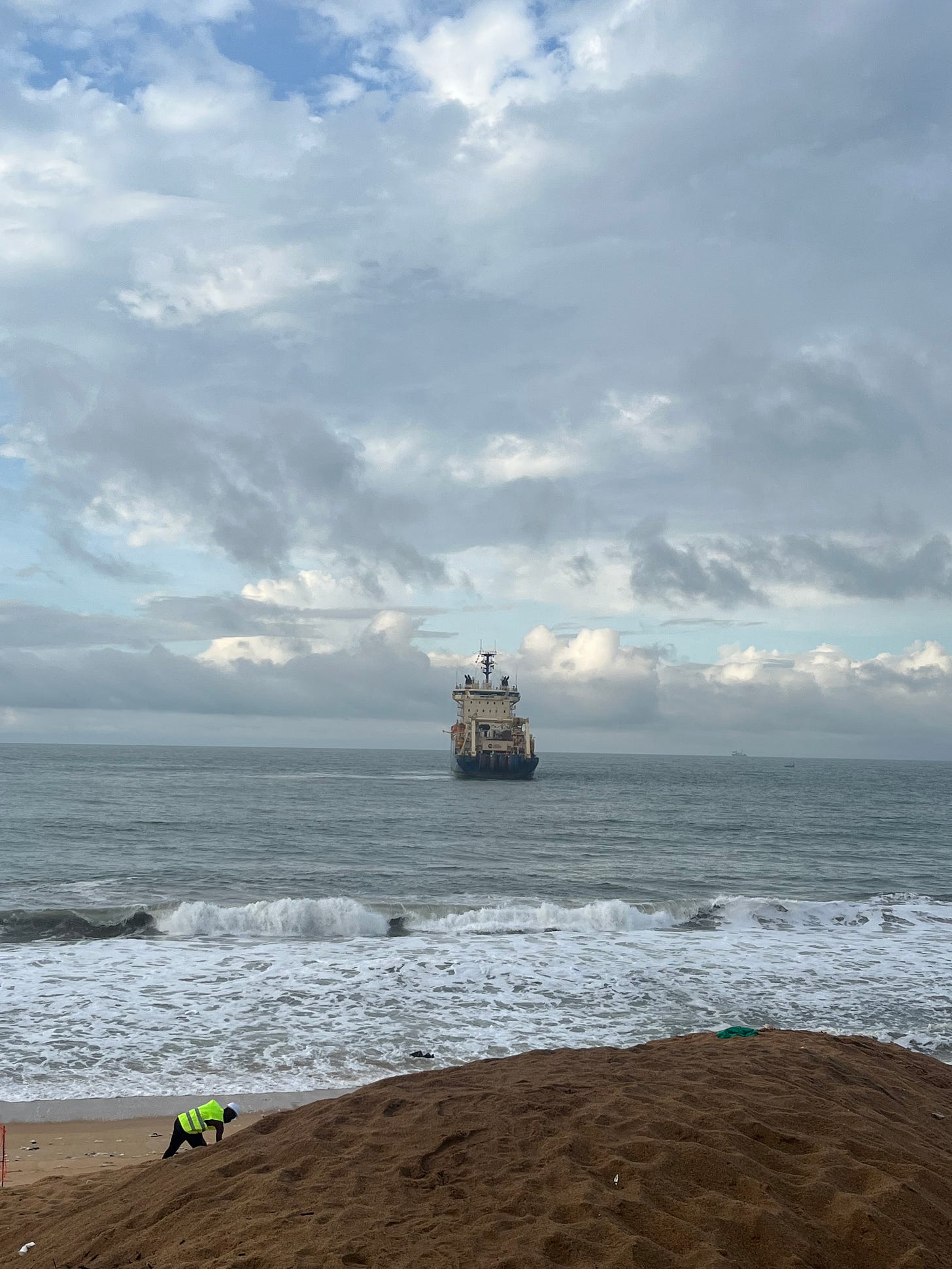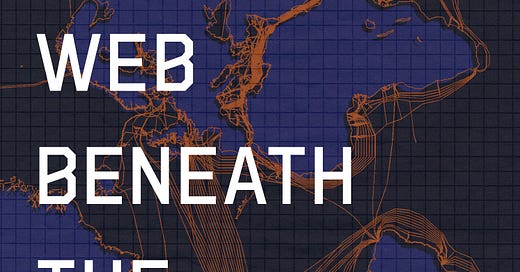It’s just as well for you all that books take years to write. When I started this newsletter in 2020, I must have done a certain amount of book promotion, entreating and beseeching you all to buy (if not read) “A Dominant Character,” my biography of JBS Haldane. (There’s still time.) A full five years have passed before we’re at that stage of the cycle again. Over the next few months, I may ask you to pre-order / order / buy / read more than one new book of mine, depending on where you live. You have been warned.
If you’re in the US or the UK, you can pre-order, right away, “The Web Beneath the Waves,” to be published in Oct. / Nov. 2025. (US Amazon listing here. UK Amazon listing here.) It’s a book I hadn’t planned to write, but Columbia Global Reports does these excellent, slim, 25,000-word books, and I figured this might fill the time while I hunted down an idea for a full-length book. Thanks to the pandemic, in part, the book took 2.5 years to research and write—but it took me to parts of the world I’d never dreamed of being able to visit (Tonga, Cote d’Ivoire, the Taiwanese islands nuzzled right up against China…) and it immersed me in the universe of subsea data cables, which are the very reason you’re able to read this newsletter post.
The first time I’d ever thought deeply about these cables was around 2010, when I found Neal Stephenson’s WIRED piece from the mid-1990s, titled “Mother Earth, Motherboard.” It’s 40,000 or so words long, but I remember still how I gulped it down—to the point that, when I had to step out to the local market to buy medicines, I kept reading it on my phone even as I walked there and back. It’s a striking piece of non-fiction, animated by the image of a “hacker tourist” visiting the sites where these cables emerge from or disappear into the ocean. At the time, I was working on a travel book of my own, and was riveted by anything in the genre that managed to transcend it, to be about more than the traveler. On that walk to the market, more than anything else, I wanted to be that hacker tourist.
I’d planned “The Web Beneath the Waves,” in every sense, wish fulfillment—not just for the ability to do a Stephenson in the 21st century, but also as an indulgence of my journalistic love of burrowing down into a particular subculture or industry. Odds are that you’ve never met anyone who has laid a data cable under the sea—and yet these cables determine every single aspect of our daily lives. We may think of the Internet as a wireless miracle these days, but there are wires somewhere, and close to 97% of all Internet traffic flows through them. For all the noise made about Starlinks and satellite Internet, you couldn’t fill Earth’s orbit with nearly enough satellites to replace the 500-odd cables at the bottom of the ocean. For how indispensable and ubiquitous they are, these cables aren’t written about enough. That would have been catnip enough for me, but the fact that a secretive, quirky, highly technical industry lays and repairs and plans these cables made the whole subject even sweeter.


After I signed my contract and began work, a strange thing happened, though. More and more, these cables started to be seen as security risks. Countries had always worried about natural disasters or fishing-boat anchors slicing their cables apart, but now they also fretted about enemies or terrorists doing the same thing. They were right to be anxious: Cutting the Internet to a region means dooming nearly every aspect of its infrastructure. In the daily news, you’d read about Chinese or Russian ships suspected of damaging cables in northern Europe, or the Houthis as possible saboteurs of cables off the coast of Yemen. Spy thrillers and action movie plots began to revolve around cable sabotage. Once you started looking for this stuff, it was everywhere.
Recognizing how vital these cables have become to their economies, governments started to tighten their grip over what had been a relatively loosy-goosey kind of industry. The UK now has a warship to patrol its subsea infrastructure. The Scandinavian countries have cable patrols in the Baltic Sea, with one wary eye turned towards Russia. The US, worrying that China will tap its cables, now routinely puts the kybosh on any cable projects that involve Chinese firms; those firms, in turn, have started laying their own parallel cable systems—same routes, different cables—leading to what people call a bifurcation of the Internet. The US’s control over Internet data flows is particularly powerful, because roughly two out of every three new cables laid today are funded, in part or in whole, by Google, Meta, Amazon, or Microsoft. The Internet’s nervous system has never been more American, and more Big-Tech-American at that—and that should worry the bejeezus out of all of us.
But I assure you, this is not a policy-wonkish book. Among the characters and stories in the book are:
A wizened Danish man who began his career in 1962 and who, when I met him in 2024, had just returned from surveying the western coast of Greenland to see where a new cable might land.
Undersea volcano! A cable snaps! High drama out in the South Pacific!
A doomed experiment to deliver high-speed Internet via balloons perpetually floating about in the stratosphere.
The legend about the rare species of seaweed with a core of gold!
A former executive at a Chinese cable company speaks!
Syrian soldiers wondering how much the guns in Pulp Fiction cost.
The very slow, almost antiquated method by which a ship retrieves a cable from the ocean floor.
And more!
Once again: Please pre-order! It does wonders for the fate of a book. As a final refrain: US Amazon listing here, and UK Amazon listing here.




